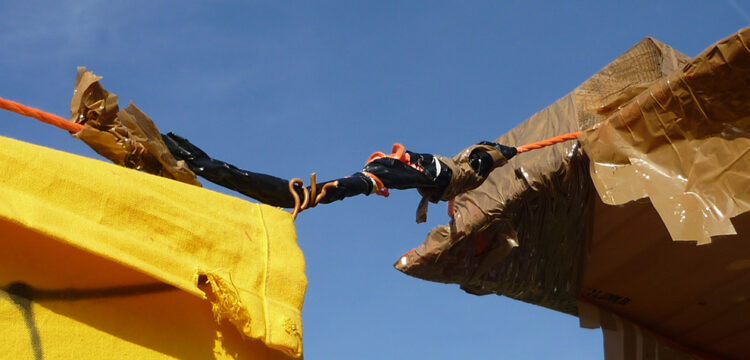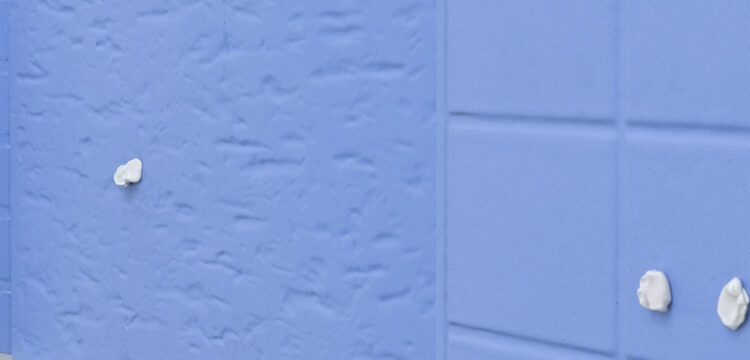An Entirely Different Kind Of Family
On Ludovica Carbotta’s most recent work
This text is a spin-off of another titled The Politics of Imagination: the imaginal as artistic practice that I wrote for the book accompanying Ludovica Carbotta’s exhibition, Very well, on my own (Edizioni MAMbo, Bologna 2024). These commissions have a deadline and a finite word space, and the work is meant to stay within it, sacrificing whole concepts as the study deepens. Although I love that text very much, this time I did not breathe a sigh of relief when I handed it in; I did not feel it closed because my head kept producing a certain reasoning I could not ignore. And here I found a space to share it.
“An entirely different kind of family.
Not exclusive, like your families, and not predestined, not compulsory.
An inclusive, unpredestined and voluntary family.
Twenty pairs of fathers and mothers, eight or nine ex-fathers and ex-mothers,
and forty or fifty assorted children of all ages.”
—A. Huxley
The text this other one stems from began with an argument about the use of language in Ludovica Carbotta’s work, an aspect that seems to me not only essential, but gaining consistency over time. There I was claiming that I see her work on language as really generating a language taking shape through the different works. In her first works, Carbotta often affirms to be experimenting with the ancient literary procedure of ekphrasis, although it seems to me that she was actually testing some sort of deconstruction of the narrative form from its illustrative character, taking the word to its maximum tension toward the image. In this way, the ekphrasis or the description becomes a process opposed to the logical-cultural interpretation provided by traditional narrative, and becomes plastic, visual, coming to create a space to “experience words in the same way of the image.”
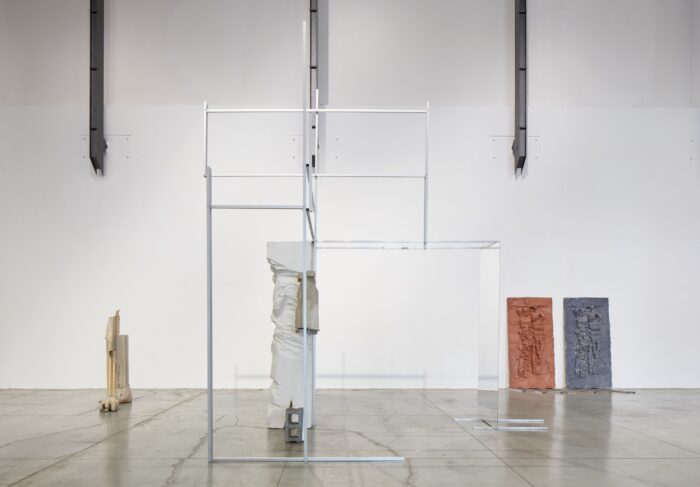
I continued by thinking about the power that imagination has to reverse worlds, societies, communities, and how an “imaginal practice” is a political work, the result of the individual’s ability to imagine (i.e., to create images) what is not in front of us. I noticed how Carbotta’s sculptures often presented themselves in the exhibition space, always as if they had already gone through other experiences, carrying visible traces of a previous life. I had come to a point where I defined her work as a “cosmological place”, especially in regard to more recent ones. I ran out of characters when I got the feeling that she was starting to build new communities through the relationships that were forming between the different works as they turned into narrative links, therefore producing stories. In these relationships, each sculpture, each thing, seems to have its own lexicon, its own inclination, and its own experience. It seemed to me that her sculptures were increasingly becoming “narrative objects,” real characters. In recent works (Faustine, 2019; Die Telamonen, 2020; Paphos, 2021-2022; Monowe, 2023), Carbotta is building a new community consisting of the psycho-affective processes of all the stories and characters she is producing. This new community seemed to me the closest thing to a maternage, that is that women’s communal political practice, or rather, that “form of civil resistance both strengthened and mediated by the symbolic charge connected with the female figure.” Precisely because Carbotta’s methodology is based on sharing her work and experience, by placing her own body at the center, I thought that one cannot ignore the fact that her “cosmological” production of the past three years is influenced by her new context and experience: immersed in a world of children for becoming a mother herself. At that point the text was finished and delivered, but I kept asking myself: how much biographical fact is permissible to be included in an art-historical essay analyzing and reading an artist’s work for an exhibition catalog? Why did I have this insight connecting maternage to the artist’s most recent production, although I had the impression I was touching a private fact of no art-historical relevance? Carbotta’s recent creation of family communities caught my attention precisely because it takes place at a specific time of epistemological change in the artist’s life: why then I feel this hesitation in regards to writing about it?
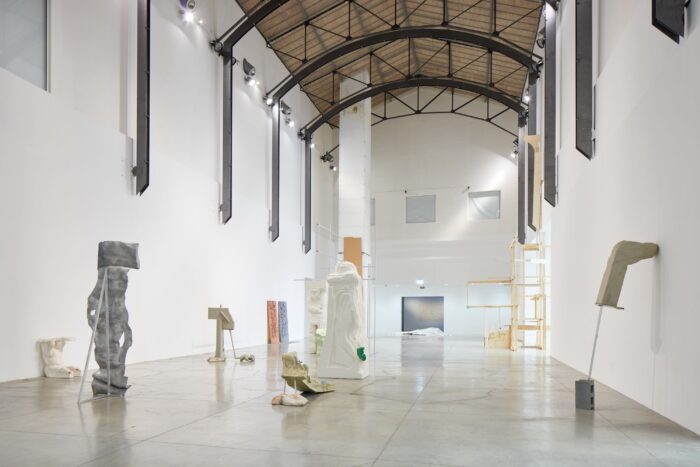
Gender identity is knowingly central to biographical writing, as Virginia Woolf, Simone Weil, or Simone de Beauvoir already argued, and for an artist who produces sculptures and installations by focusing on her own experience and body, that can’t be that different. Carbotta gives birth to “something that did not exist before, something imaginary, in the physical, real world,” going as far as to explicitly say “perhaps all sculptors, male and female, could be mothers.” [1] It is not irrelevant that she says “male and female”—which expresses not only a concern with gendered language, since Carbotta is talking about motherhood, having experienced it, and it is evident that it is still a biological female prerogative. But in Carbotta’s work time and space, intended as measurement categories created by mankind for a principle of order and control of the world, do not exist, because “the activity of the artist, can fortunately still be a kind of island where time and space function differently.” So does gender identity. The political radicality of Ludovica Carbotta’s work lies in the imagination and a narrative production that reveals possible alternative realities—as I said: it is politically radical precisely because it is ontological.
The experience changes and so does language.
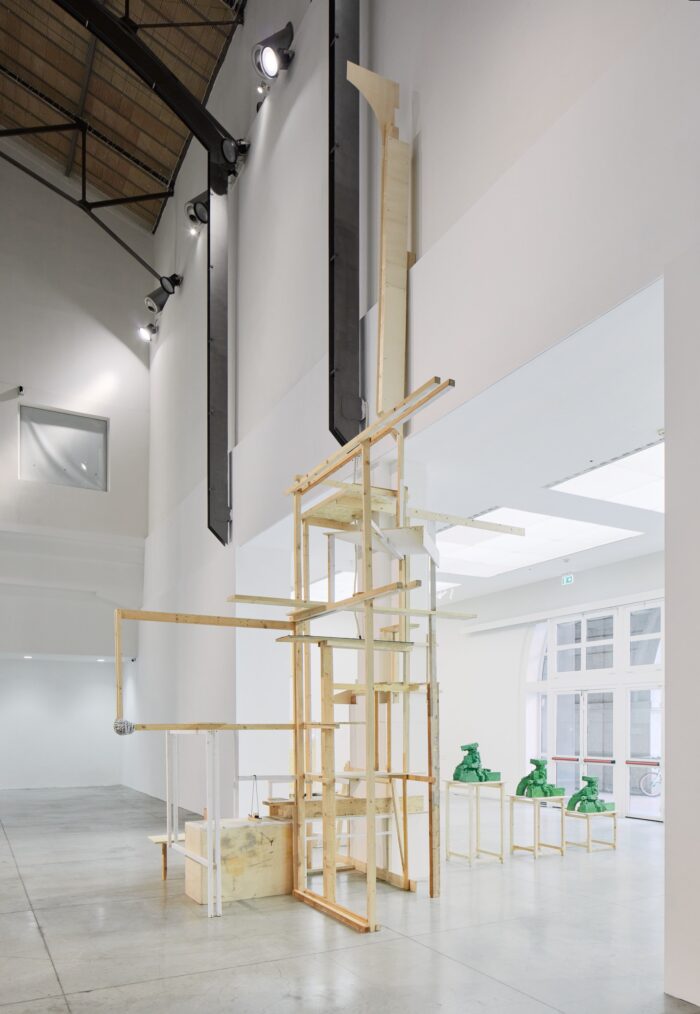
Followed by what I see as the production of pattern-forms that, when juxtaposed, are capable of continuously creating meanings and worlds as if they were words, the initial ekphrasis is layered, intertwined, complicated, slowly becoming mythopoiesis. In the Protagoras, Plato tells us that there are two ways to explain concepts: the way of logos and the way of mythos. Both lead to the same narrative result, although Plato explains that with the mythos is definitely more beautiful, because the mythic method is a universal tool, therefore more powerful, as it produces narratives with both images and words. To me, Ludovica Carbotta’s recent language has become mythopoeic because it continually produces myth, not only in narrative, but by continually reconstructing the formal language (the image) in an imaginative accumulation. It is not possible to explain without images and Carbotta is bringing into the world certain forms that are finished but remain mutable, forms that relate to each other, have an identity of their own, a language, a destiny, enacting a thought, that is what you do when you tell stories, and storytelling is a political practice. Take for example Faustine (2019), [2] a character identified as female who we first find on a rock in the middle of the sea. Like a myth, only by approaching we can understand the nature of that creature who is perhaps subject, perhaps object, perhaps just imagination, and here the words of a text written by the artist on her behalf intervene and, like a spell, grant her a breath of life, a voice. Faustine is the first character we meet of the Telamons (Die Telamonen, 2020), a dysfunctional family consisting of three generations, united by the loss of memory of their past. Each character has a definite gender identity, each is aware of their own “body” which remains the only visible and concrete trace of something that has been lost, each following his or her own inclination, in different forms and materiality. Some are more satisfied with their bodies, like Fausto (2020), Faustine’s “forerunner”, who instead continually questions his being made only of matter, looking at himself with his wooden uprights, rudimentary limbs, that inconspicuous color, and continually asks Fausto questions to seek clarity and reconstruct the memory that will bring them confidence again. Then there is young Faustolo (2020) whom the precursors Fausto and Stine (2020) look at smugly as they think he is perfect, despite him being full of himself, as opposed to her sister Fausta (2020) who, as she was pulled out of her cast it became clear that she would never be able to stand upright because of her soft, ductile material. The precursors never did anything to help her, she still grew strong and of all the Telamons she is the most flexible, at peace with herself. There is Stinenits (2020) constantly pushing with all his weight on the shoulder of patient Fausto, perhaps it is part of him, it is as if embedded [incastonato]; there is Faustotsuaf (2020), lonely, desperate, miserable, with a body that stands in his way and preserves his memory against his own will. Then there is another couple of ancestors, equal in shape that “look like standard images from ordinary memory,” which remind me of Pompeian casts. The Telamons are already a mythical epic; the elements are all there: a gnoseological reflection regarding the self, one’s body and one’s matter (they are sculptures), there is a reflection on the family institution in which, apart from the surname and the destiny they share, each member is different from the other and the generational posture in front of one’s past, in relation to memory, is different. For each sculpture in this series Carbotta has created a role, a story, and a personality that positions and defines each character within the family structure. There is another recent work that caught my attention, it is Paphos (2021) a clay sculpture that changes shape over time, and that has to do with the generative process. In Ovid’s Metamorphoses, Paphos is the daughter born from Pygmalion and the statue he made, with whom he falls in love and who comes to life through the intervention of the goddess Aphrodite. It is not specified in the myth whether Paphos was a statue or a person, but it existed since everything that exists can be described through a form of language; what cannot be described, cannot exist. Paphos takes its name not coincidentally from the myth of Pygmalion and not coincidentally is a female child, but the sculpture takes on different conformations in the same way as people who have physical and psychological backgrounds that influence them originally, but whose personalities are formed over time by experiences that is what makes them unique. Paphos is a sculpture that is born solitary, but takes different shapes, and from itself generates new forms (S/T (Paphos), 2021); it is a sculpture that can incorporate into its material unexpected external elements that become a constituent and sometimes load-bearing part of it, (where one ends and the other begins (Paphos), 2021); finally it can be transformed into a bronze sculpture, which is the most immanent material, but even then it continues to generate itself because of the same wax model, each time it is different because of the intervention of the artist who manipulates the wax itself, creating a unique piece each time [one thing after another (Paphos), 2021-2022].
Paphos is particularly interesting because it is declared to be the result of a dual experience of the artist, namely lockdown and pregnancy. Confinement suspended global time within each of us’ personal time. As the artist writes, “the repetitiveness of those days left most of us with the inability to create new experiences, mold them as new memories, as each day was repeated identically as a loop.” But Ludovica Carbotta was pregnant and, even in the fixity of time understood as a human construct, her woman’s body was changing and seemed to know on its own how to do so, like a sapiential organism, suddenly multifaceted, that was creating a new form within her, beyond her control. This being so much inside the experience seemed to bring further this methodology of beginning from oneself, naturally. Carbotta used clay and documented every change in this sculpture that “learns to grow” and transforms through proximity to other forms and its surroundings: Paphos has the ability to transform, to generate, to embrace [accogliere]. I think about how the use of clay is not only due to a contingent factor of easy availability, given the context of confinement, mainly because of the care that the artist always takes in choosing her materials. I think of clay and its primarily biblical symbolism of God molding with it the first man, I think of its pliability, its easy availability, and the very small size of its particles that allow for a high absorption capacity, determined by cohesion between the particles, rather than friction.
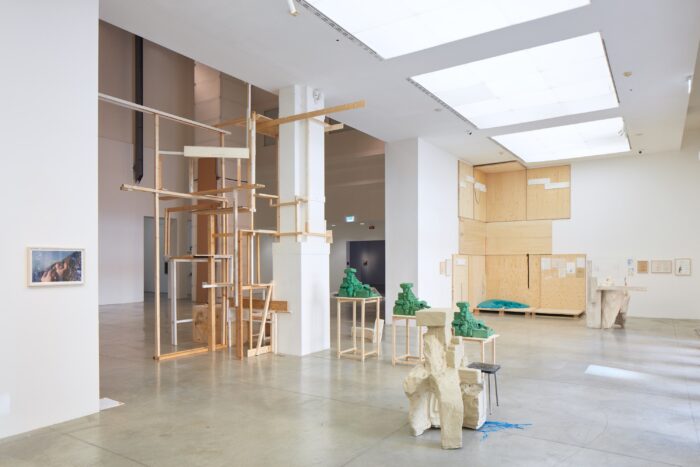
Finally in her most recent work, the film Monowe (2023), in its complexity of references and meanings on both formal and narrative levels, I would pause to note how—unlike the Telamons—here there are evidently female and male characters, evidently young and old, but these can be indifferently she, he or they, they are all and all dressed alike, almost resembling each other in the overall color homogeneity, as the flow of thought is shared and it seems not to matter who’s speaking: the feminine, the masculine, the neutral—here no one is positioned—alternate indifferently. Here again, Carbotta has done a great job on language, in this case also on gender language, which in Italian is particularly evident, but I refer in particular to the dialogues between the characters-people and Moderate SD 01, Moderate AD 01 and Severe UD 01 (2019) i.e., the characters-sculptures, materially and formally very different from each other, each with discomforts consequent to their formal nature (their body), each with a different sound (voice) and temperament. Sculptures and people are on the same narrative level. Carbotta’s attention to the gender language is not simply adherence to a certain linguistic correctness, but something more. This undifferentiation of gender and age leads to a productive indistinction between people who can be indifferently very small children, young girls and young boys, adults and older adults. They all go through the same experience and are united by it. If we take one step further, you realize that all the characters in the film, like all the narrative objects, come from other stories, they have past experiences: all of the narrative objects we have seen appear in Monowe‘s various manifestations from 2016 until now, and the characters are either people who have already appeared (and thus they have already been seen and refer back to something we remember) or belong to the artist’s own family. The fact that Ludovica Carbotta involved her real family in the Monowe‘s fiction is a central element that blurs all boundaries between imagination and reality. This is because, as mentioned above, Carbotta brings into the world “something that did not exist before, something imaginary, into the physical, real world” and vice versa.
All aimed at filling reality with stories and characters like the myths that have been with us and explaining the world for centuries, Carbotta’s mythopoetic production of this last period is extremely complex. Precisely like the hypertrophic production of the past three years, it seems to me that this necessity to create a community as broad as possible is linked to this precise biographical moment. Carbotta’s lifelong shared creative and generative generosity now leads to the transformation of the self that embodies the imagining, thus makes social transformation possible. For Carbotta motherhood is part of the practice of maternage, a political fact for the intensity and responsibility that caring for “a new being” who has come into the world requires, for it is “not a product, but just a caring,” and it is something that has very little to do with the poetic and much with the concrete, closer to militancy because it is about caring for the “first cell of society,” as Silvia Federici would say. And I’m also reminded of Carla Lonzi when, speaking of motherhood, she writes that it is the time when women become deacculturated because “retracing the initial stages of life in emotional symbiosis with her son (…) she sees the world as a product foreign to the primary needs of existence that she relives. Motherhood is her ‘journey’”, and this journey leads to a conscious reappropriation within a sphere of possible fulfillment that the Western capitalist economy has ideologically taken away from women: the maternal one. This is the same argument bell hooks makes when she differentiates the “liberationist view of the white woman” that we have introjected, that is, the view of motherhood that isolates and is a burden, and the experience of black women and tells us that “from slavery to the present day (…) they worked outside the home (…) [and] that work gave meager financial compensation and often interfered with or prevented effective parenting. Historically, black women have identified work in the family context as humanizing work, work that affirms their identity as women, as human beings who show love and care.” hooks continues by saying that black women who had to leave home and work to provide for their families could not afford to send their children to daycare and had to rely on the help of the community around them. Even families in which the mother stayed at home could count on the help of the community. She did not need to take the children to the playground to look after them all the time, because they could be attended by a number of people who lived on the way to the park. This is what that already-mentioned wonderful handbook A Pattern of Language, most useful for imagining ideal communities, tells us, beginning from the “family” chapter by arguing that “up until a few years ago, human society was based on the extended family (…) all living together” and then state in bold “the nuclear family is not by itself a viable social form: it is too small.”
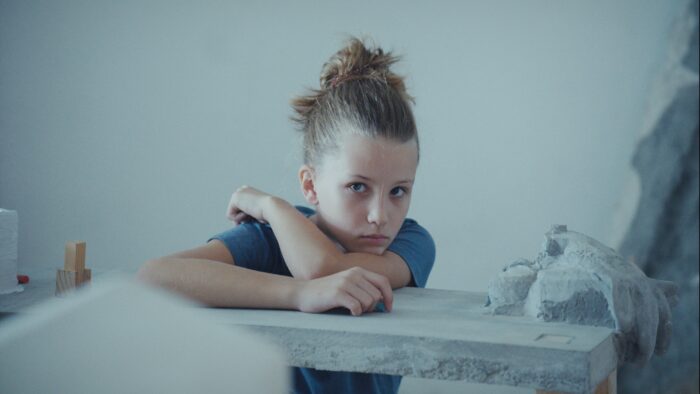
hooks tells us that feminist theorists have intuited how problems arise when parenting is exercised exclusively by an individual or exclusively by women, because female parenting offers children only one model, as well as perpetuating the idea that parenting is a female vocation. This has a great impact at a time when women are parenting less because they are working more, but they are parenting alone more often, and hooks emphasizes how this raises an issue that should be the central one for the future feminist movement: “the right of children to effective child care by parents and other caregivers; the restructuring of society so that women do not exclusively provide such assistance”, adding that the white idea of an individual having sole responsibility for raising children “is the most unusual parenting model in the world, among other things, a model that has proven unsuccessful because it isolates children and parents from society.” As Federici argues, it was a failing of the feminist movements of the 1970s to have ignored the issue of reproduction and parenting, offering only individual solutions, as if it were a private matter, focusing exclusively on how not to fall into motherhood, thus on the fight for abortion and pregnancy control, while one should also consider the case of wanting motherhood, but, for example, not being able to afford to raise children due to lack of money and time; consequently one should “open a struggle on the issue of reproduction and decree that raising children and caring for people is a social responsibility” that must be shared.
Federici makes it a matter of building a society in which creativity should be a mass condition, “not a gift reserved for the lucky few, even if half are women. Our story today is that of thousands of women who languish over books, paintings, or music that they can never finish or cannot even begin because they have neither time nor money” the same one that Carla Lonzi called “an endless procrastination to self-realization.” According to Federici, we need to expand our conception of what it means to be creative: “at best, one of the most creative activities is to be involved in a struggle with other people, to break our isolation, to see our relationships with others change, to discover new dimensions in our lives,” to imagine new communities, to experience new social relationships because politics depends on the imaginal and because anything can only begin to exist when it is first imagined. The subject needs representation through image so that a group of people can exist as a whole: communities cannot exist but as imaginal entities. [3]
This I believe Ludovica Carbotta is telling us with her most recent work. Without community one’s own positioning becomes irrelevant, without confrontation what one thinks becomes irrelevant, without dialogue one forgets who they are because one loses the words to express and realize it.
[1] Balbi L., Carbotta L., “The interviewer claims to know you”, in Ludovica Carbotta. Very well, on my own, Edizioni MAMbo 2024, p. 18.
[2] The sculpture bears the name of the female character from Bioy Casares’ novel, The Invention of Morel (1940), which, along with the films of Yorgos Lanthimos (in particular Dogtooth, 2009, but also The Lobster, 2015 or The Killing of a Sacred Deer, 2017), are the references that I see as most relevant to the atmosphere of Carbotta’s work. I think it is time to think more complexly with respect to her work by no longer simplifying it by relegating it to the sphere of science fiction -which certainly creates worlds through imagination in the same way- but Carbotta stays in reality, in real experience, and her work is to start from the real and to subvert it.
[3] Bottici’s text has been the basis of my thinking about Ludovica Carbotta’s work. I believe her theorization of the “imaginal” to be one of the most productive tools currently at disposal.




